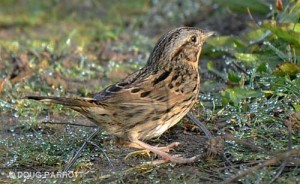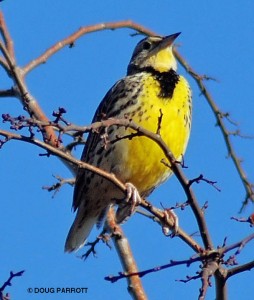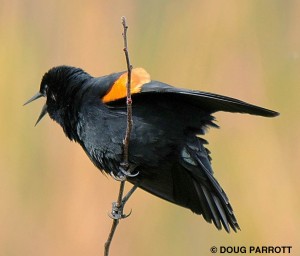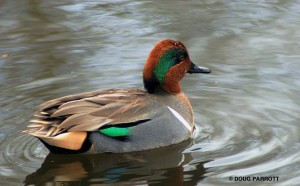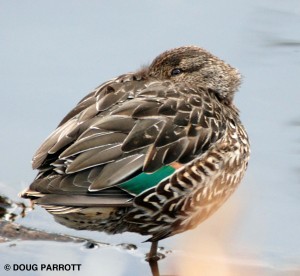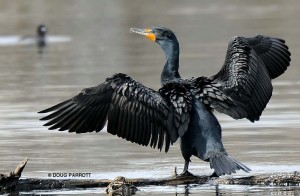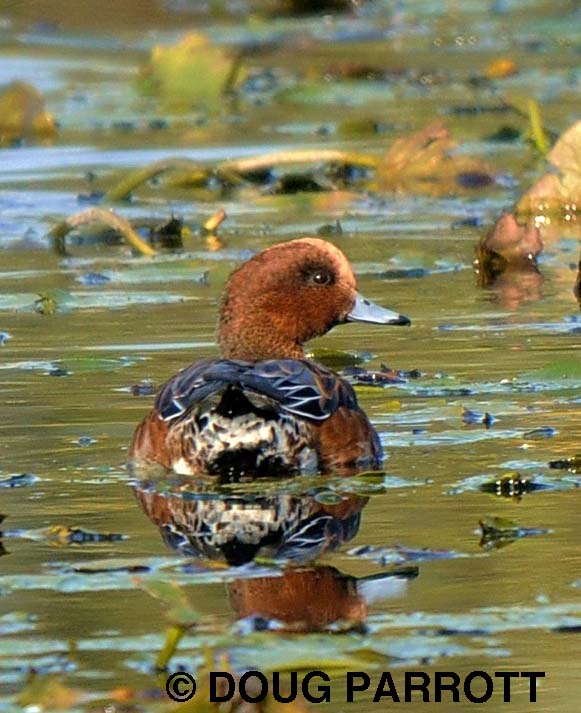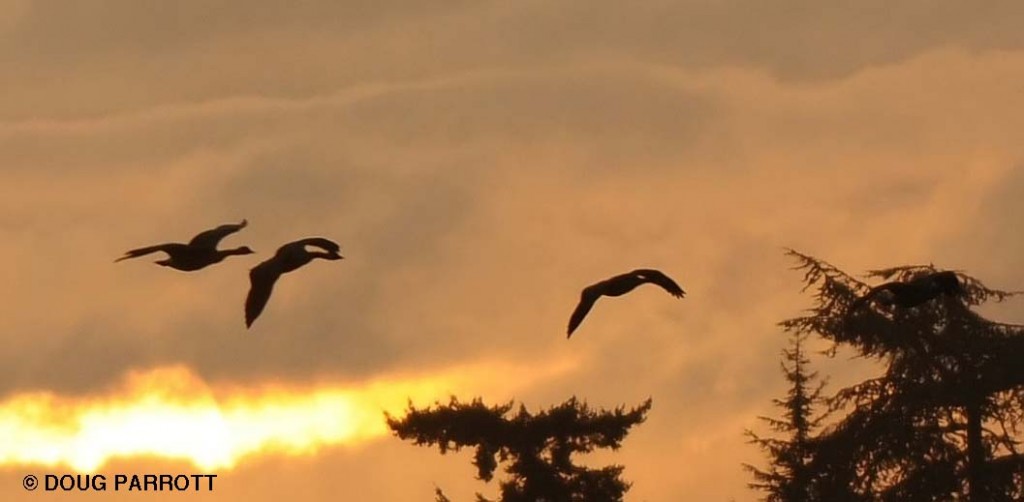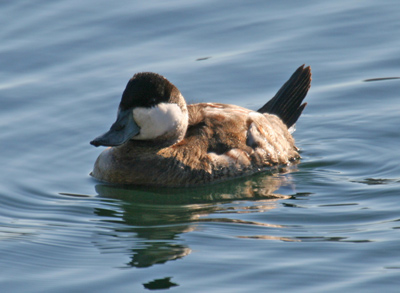
You would have loved the Fill today. The sun was shining against dark clouds, which created a special kind of light that bathed the whole Fill with an inner fire so that the leaves drifting in the wind looked lit from within. All our recent rain has raised the lake levels high again, submerging the detritus along the cattails and reducing the available lounging space for the turtles. Only four braved the waves today. Despite the higher water levels, a huge but skinny mud island has appeared at the entrance to the Cove, rising from the lake depths like Atlantis coming up for air.
Thirty-eight Double-crested Cormorants were perched on the island, all in a row. They were minding their own business when an Osprey swept in for a landing and perched on the mud. It looked uncomfortable as it held its tail up out of the mud and tried to find a good place to stand. As it shuffled around trying to find a comfortable spot, the Osprey paid no attention to the cormorants, but the cormorants were not as polite. Every single one of them was watching the raptor. They looked like boot camp recruits on parade. “Eyes left!” bellows the drill instructor, and all heads turn in unison.
It was so funny I laughed out loud and unfolded my camp stool to watch the show. Unfortunately, the tableau didn’t last for long. A Bald Eagle swooped in from the west, driving a huge flock of ducks before it as it came. Every bird on the mud island sprang into the air, and when the eagle had passed by, the Osprey had disappeared into the ether. Meanwhile, the flock of ducks settled down close to shore, and I was able to see what they were. Most were rather scruffy-looking Ring-necked Ducks in the middle of their molt, a sight I don’t often see. Usually the Ring-necked males are spiffy in their black-and-white suits, not a feather out of place. But these males had odd patches of brown mixed in with a little white and black here and there, as though they had just got up out of bed and were still rumpled. A Canvasback floated among them, as did a Northern Pintail, looking elegant as usual.
Along the side of the flotilla floated a lone Ruddy Duck with big ideas about himself. He evidently thought he was in charge of the flock because he kept herding all the other ducks along. When the Canvasback floated out of formation and crossed his path, the Ruddy gave it a heck of a bite to get it back in line. The Ruddy was about half the size of the Canvasback, but I guess determination matters a lot more than size.
It reminded me of a story my father told me about his training days in the Army during World War II. He belonged to an amphibious unit that was preparing to go to New Guinea. It was led by a colonel so diminutive that my father wondered how he had ever passed the physical to get into West Point. But what the colonel lacked in size he made up for in feistiness. He took no guff from anybody. One day a shipment of experimental life jackets arrived. The men were supposed to try them out to see if they worked better than the bulky Mae West vests the men had been using. As my dad’s platoon stood on the dock wondering what to do, the colonel appeared, a short stogie clamped in his jaws. “What’s the hold-up?” he growled.”
The shavetail who was supposed to be in charge began to mumble out an excuse about trying to devise an experiment, but the colonel cut him off. “Give me that,” he said, grabbing a life jacket and putting it on. Without another word, he strode to the end of the dock and kept walking right out into space. There was a splash, and then my dad saw the colonel in full uniform, stogie still in place, bobbing in the water. Apparently, the new life jackets worked.
If that Ruddy Duck on the Cove today had had a stogie, he would have looked just like that colonel of long ago.

